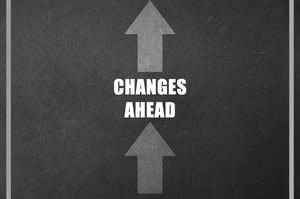As the manager of your wellness program, have you ever been at the point where participation has stalled a bit? Maybe January was huge with all the New Year’s resolutions and February was decent, but it slowed down in March and April. So how do you reach out to that crowd that’s a little less motivated to participate in your wellness programming?
Learn names.
Think about the last time you were new in a place—maybe a gym, maybe a church, maybe even your favorite restaurant. It’s a little uncomfortable, right? Even if you’re an extrovert and you love meeting new people, it’s not the same feeling as walking in to a group of friends. Now think of how much more at ease you would feel if you heard your name and turned around to see someone you knew. Take the time and make the effort to learn as many names as you possibly can. And then use them! Asking “Hello, Mrs. Smith, how’s your day going?” can go a long way toward building a rapport with Mrs. Smith and making her feel welcome in the fitness space.
Invite them out for coffee.
Get to know them! The point of this coffee date is not to probe them with questions about why they aren’t coming to this amazing triathlon event you’re having with all the prizes. The reason you’re sitting down and taking 20 minutes out of your day specifically for them is to build a relationship. Ask them about their family, their career, their hobbies. Get to know them on some level and show that you genuinely care about them as a person. That’s it. You don’t even need to invite them to come down to the fitness center sometime. You’re planting a seed. Then, eventually, if you’re hosting a wellness event that has something that might appeal to them, make a point to speak to them about it directly and see if they’d like to come.
.jpg?width=437&name=GettyImages-483770407%20(1).jpg) Hand-write cards and notes.
Hand-write cards and notes.
Yes, it’s impractical to hand-write every notice or invitation that goes out advertising your wellness program. But it is absolutely practical to take a minute to write someone a two- or three-sentence note in a birthday card once a year. Make people feel special! If there’s a program where you think “Mrs. Smith would be perfect for this,” write a sentence or two on the bottom of the postcard that’s going out with the information on it. Something as simple as “I hope to see you there!” can go a long way if it’s in your handwriting with your signature at the bottom.
Remember the details.
I struggle with this one because I have a hard time focusing on one thing at a time so my memory isn’t great. So, I write it down. If Mrs. Smith comes to show me the 72 photos that she just received in the mail of her new baby great-granddaughter, I’m going to write a note to myself to remember that baby’s name so that I can ask Mrs. Smith about her in a few weeks. It seems tedious and small, but I promise you that remembering those details goes a long way in building trust with that member.
What other ways do you build relationships with people who interact with your wellness program?


 It's hard for me to believe that the first season of the reality show Biggest Loser aired in 2004. The popularity of that show has inspired all manner of weight loss competitions held under the banner of workplace health. Over the years, as a
It's hard for me to believe that the first season of the reality show Biggest Loser aired in 2004. The popularity of that show has inspired all manner of weight loss competitions held under the banner of workplace health. Over the years, as a 
 I wrote a post a while ago about
I wrote a post a while ago about 

